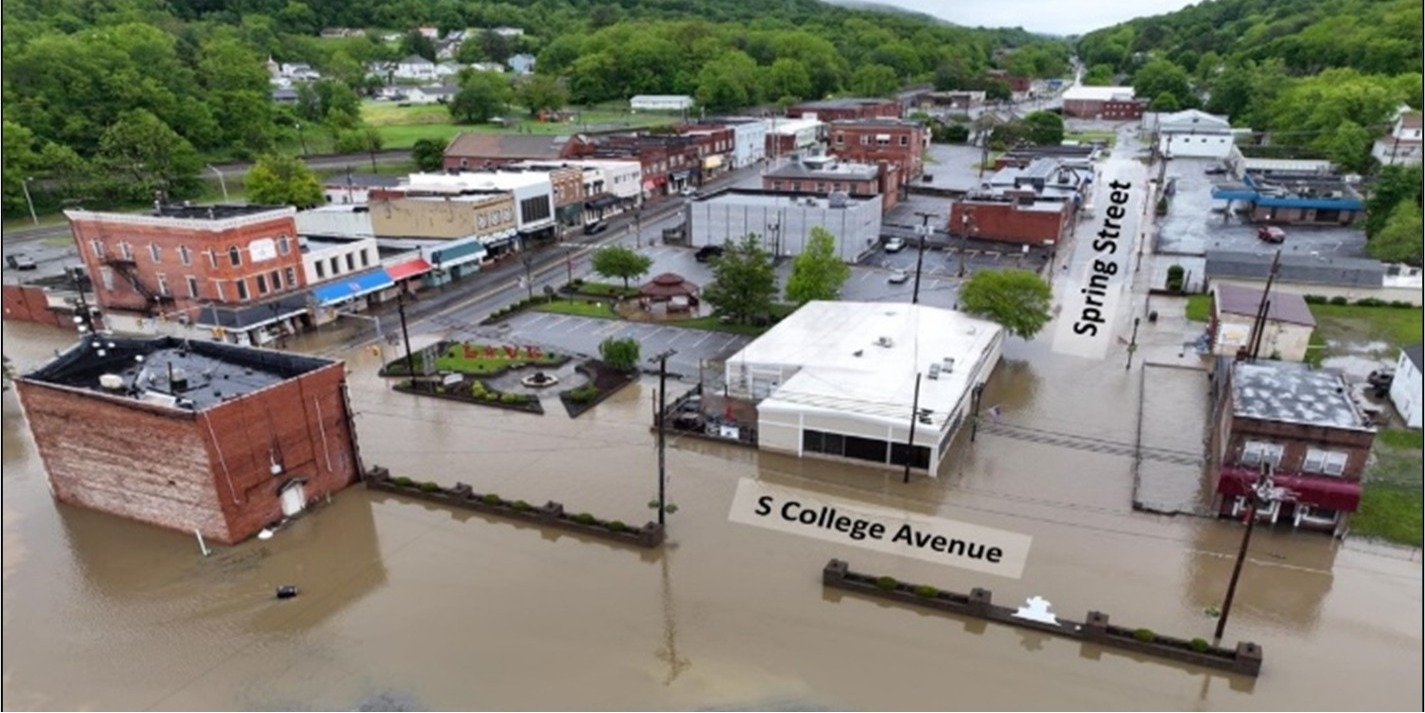A new Port of Virginia logistics center needed stream credits where there weren’t any. Dam removal saves the day.
A new Port of Virginia logistics center needed stream credits where there weren’t any. Dam removal saves the day.
Removing dams to achieve mitigation credits is still relatively new, so each project is groundbreaking in some way, building knowledge and acceptance of the benefits.
RES recently completed a permittee-responsible mitigation project (PRM) for the Port 460 Logistics Center, supporting the Port of Virginia with a new facility in the City of Suffolk. This PRM is the second dam removal to provide mitigation credits in Virginia, and the first involving ecological restoration of farm ponds behind the dams.
This on-site project provides credits in a watershed that had no stream credits available. The two dams removed at the site actually produced more credits than the permit required. “The additional credits were considered a bonus by the agencies,” says Anna Stuart Lambert, the RES project manager.
It’s part of the RES way to embrace the creative problem-solving that comes with ecological and crediting innovation. This project called for a large measure of rolling up our sleeves, Lambert says.
Significant coordination was required with the client, their permitting consultant, separate landowners, and agencies including the locality, DEQ, the USACE, and EPA. As an on-site PRM, the mitigation project also needed close coordination with the logistics center’s construction team. On-site PRMs must also establish a long-term steward – all part of the RES project management effort.
The PRM faced numerous challenges that the RES team was able to overcome, including
- Developing performance standards and a monitoring and maintenance plan to address the unique nature of stream restoration through dam removal
- Anticipating sediment transport as a result of dam removal including sediment probing and sediment contamination testing to support the production of an engineering memo including a sediment management plan
- Removal of the access road to the PRM site during the phased development of the client’s project
- Reduction in usable stockpile areas located in farm fields due to harvest timing, resulting in numerous changes to the limits of disturbance (LOD) and creative solutions by construction crews during implementation
- Helping deepen regulators’ understanding of the nature of the PRM and the benefits of dam removal
- Complex FEMA coordination, combining a multi-phased development with numerous stormwater BMPs, dam removal, stream restoration, culvert installation, and remaining upstream and downstream impoundments
- Previously unidentified drain tiles diverting flow to the newly established floodplain
- Permitting BMP outfalls constructed within the conservation easement
- Time-of-year restrictions (TOYR) for threatened and endangered species
- Groundwater seeps at the toe of excavation during dam removal
- Additional efforts to assess and protect the downstream reservoir and cypress swamp

Before: Two dams creating farm ponds resulted in disconnected streams. Through dam removal, the on-site PRM restored stream channels and riparian habitat, creating stream credits to support the development of a new logistics center supporting Port of Virginia economic development.

The stumps of inundated trees, pre-dating the creation of the dam, became visible as the ponds were drained.

The stream self-formed a channel after the ponds were drained.

RES stabilized the stream path through the dam footprint, reconnecting it to the existing downstream channel.

June 2025: Maturing vegetation creates a riparian zone in the former farm ponds.
Ecology High-Five
The project renewed and reconnected 2,590 linear feet of stream, with benefits beyond the credits generated. “The logistics center did not need the farm ponds to remain in place,” Lambert says. “Removing the dams and draining the ponds enabled a new, self-forming stream channel to emerge through the pond footprint. We connected that with the upstream and downstream channels, reestablishing natural flow patterns and habitat native to the Virginia Coastal Plain. At the same time, we generated a new body of knowledge about the applied science of dam removal for mitigation credits.”
Topics:
- Videos (45)
- Environmental Mitigation (44)
- Natural Resource Restoration (33)
- Landscape-scale Restoration (30)
- Species & Habitats (28)
- Water Quality (17)
- articles (17)
- California (16)
- Resiliency (15)
- Texas (15)
- Virginia (13)
- Pennsylvania (12)
- Regulatory (11)
- Technology & Innovation (11)
- Oregon (10)
- Klamath (9)
- Case Studies (8)
- Procurement (8)
- Research (8)
- Water Quantity (8)
- Studies & Reports (7)
- Case Study (6)
- Louisiana (6)
- Presentations (5)
- Storymap (5)
- Florida (4)
- Maryland (3)
- Urban Renewal (3)
- Video (3)
- Flooding (2)
- Illinois (2)
- Milwaukee (2)
- North Carolina (2)
- Restoration (2)
- South Carolina (2)
- Tennessee (2)
- Webinar (2)
- Wisconsin (2)
- Article (1)
- Bois Darc (1)
- Carpentersville Dam (1)
- Corporate Sustainability (1)
- Dam Removal (1)
- Economic Development (1)
- Environmental Restoration (1)
- Erin Delawalla (1)
- Justin Freedman (1)
- Mine Reclamation (1)
- Ohio (1)
- Podcast (1)
- Podcasts Audio (1)
- Suburban Chicago (1)
- Trees Planting (1)
- West Virginia (1)
- indiana (1)




